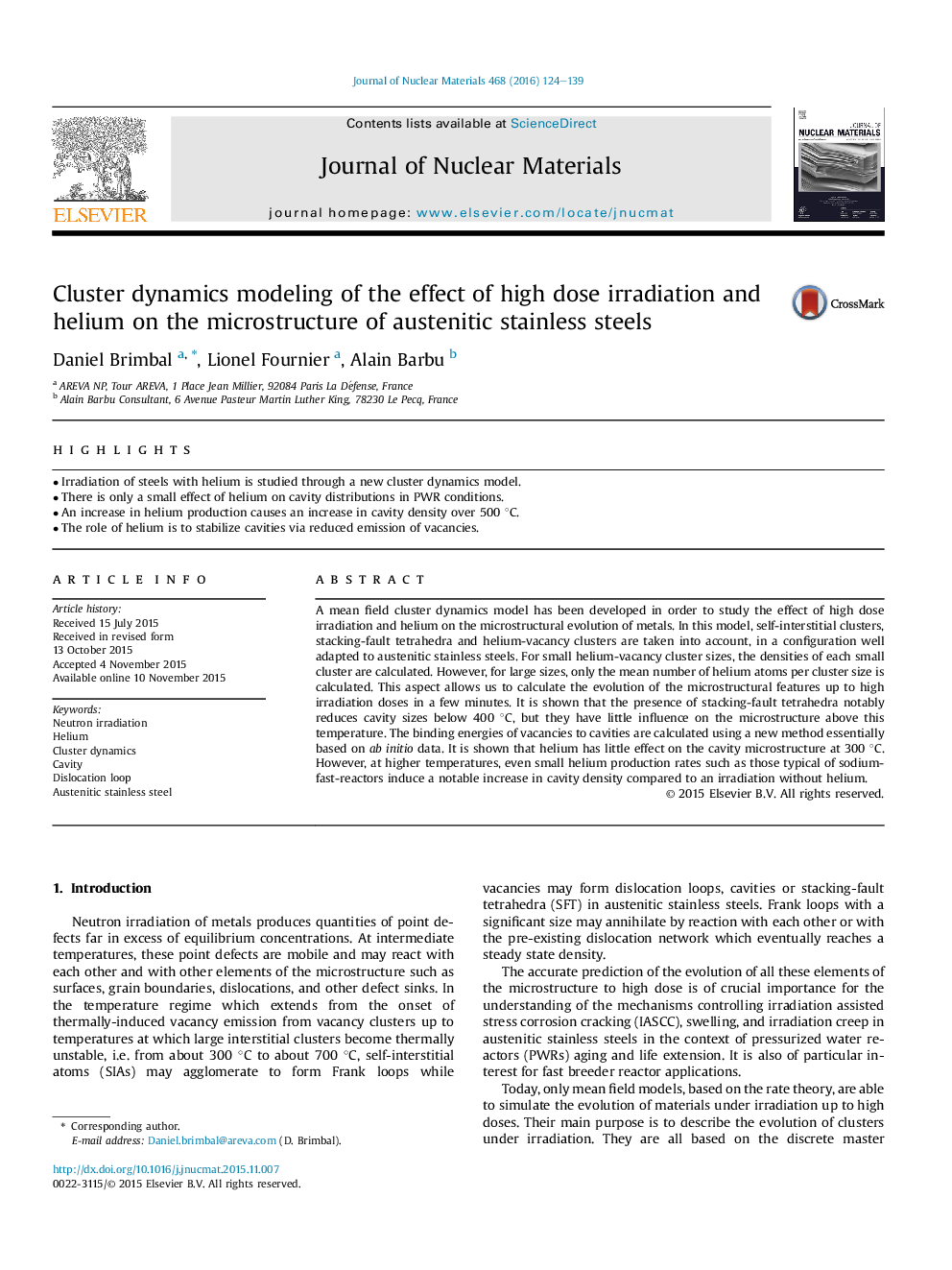| کد مقاله | کد نشریه | سال انتشار | مقاله انگلیسی | نسخه تمام متن |
|---|---|---|---|---|
| 1564822 | 1514178 | 2016 | 16 صفحه PDF | دانلود رایگان |
• Irradiation of steels with helium is studied through a new cluster dynamics model.
• There is only a small effect of helium on cavity distributions in PWR conditions.
• An increase in helium production causes an increase in cavity density over 500 °C.
• The role of helium is to stabilize cavities via reduced emission of vacancies.
A mean field cluster dynamics model has been developed in order to study the effect of high dose irradiation and helium on the microstructural evolution of metals. In this model, self-interstitial clusters, stacking-fault tetrahedra and helium-vacancy clusters are taken into account, in a configuration well adapted to austenitic stainless steels. For small helium-vacancy cluster sizes, the densities of each small cluster are calculated. However, for large sizes, only the mean number of helium atoms per cluster size is calculated. This aspect allows us to calculate the evolution of the microstructural features up to high irradiation doses in a few minutes. It is shown that the presence of stacking-fault tetrahedra notably reduces cavity sizes below 400 °C, but they have little influence on the microstructure above this temperature. The binding energies of vacancies to cavities are calculated using a new method essentially based on ab initio data. It is shown that helium has little effect on the cavity microstructure at 300 °C. However, at higher temperatures, even small helium production rates such as those typical of sodium-fast-reactors induce a notable increase in cavity density compared to an irradiation without helium.
Journal: Journal of Nuclear Materials - Volume 468, January 2016, Pages 124–139
